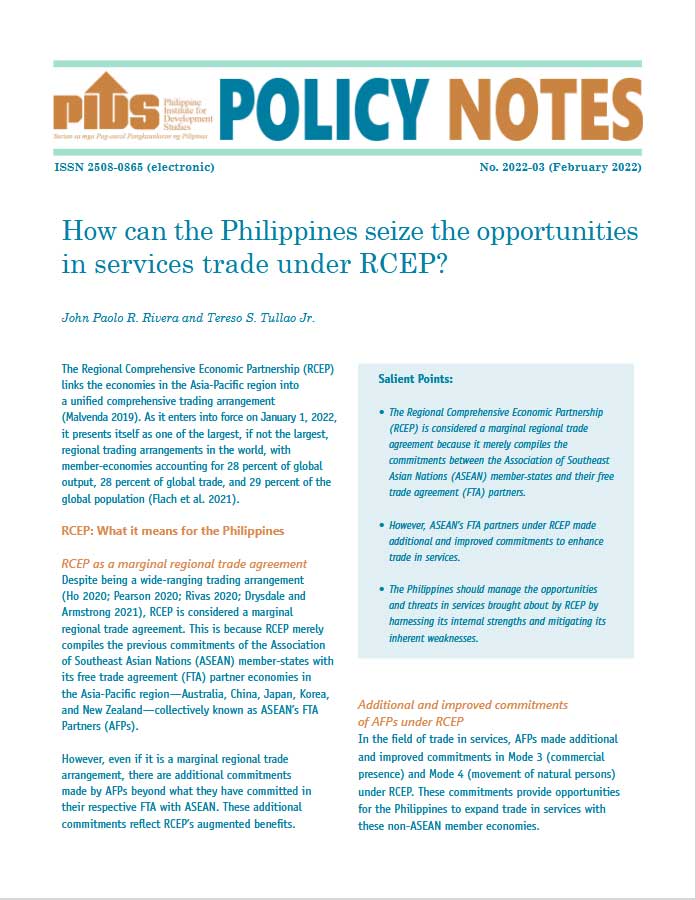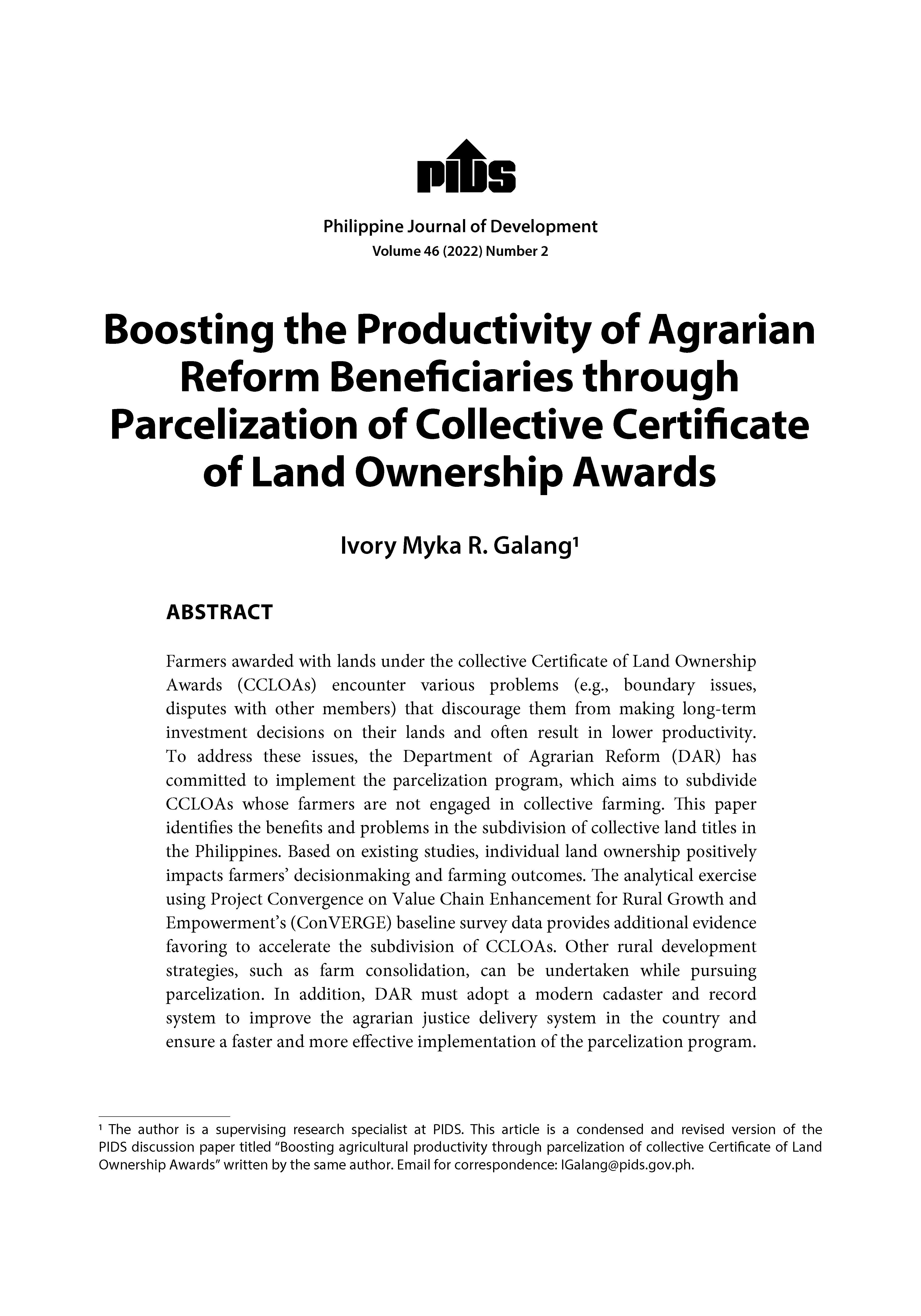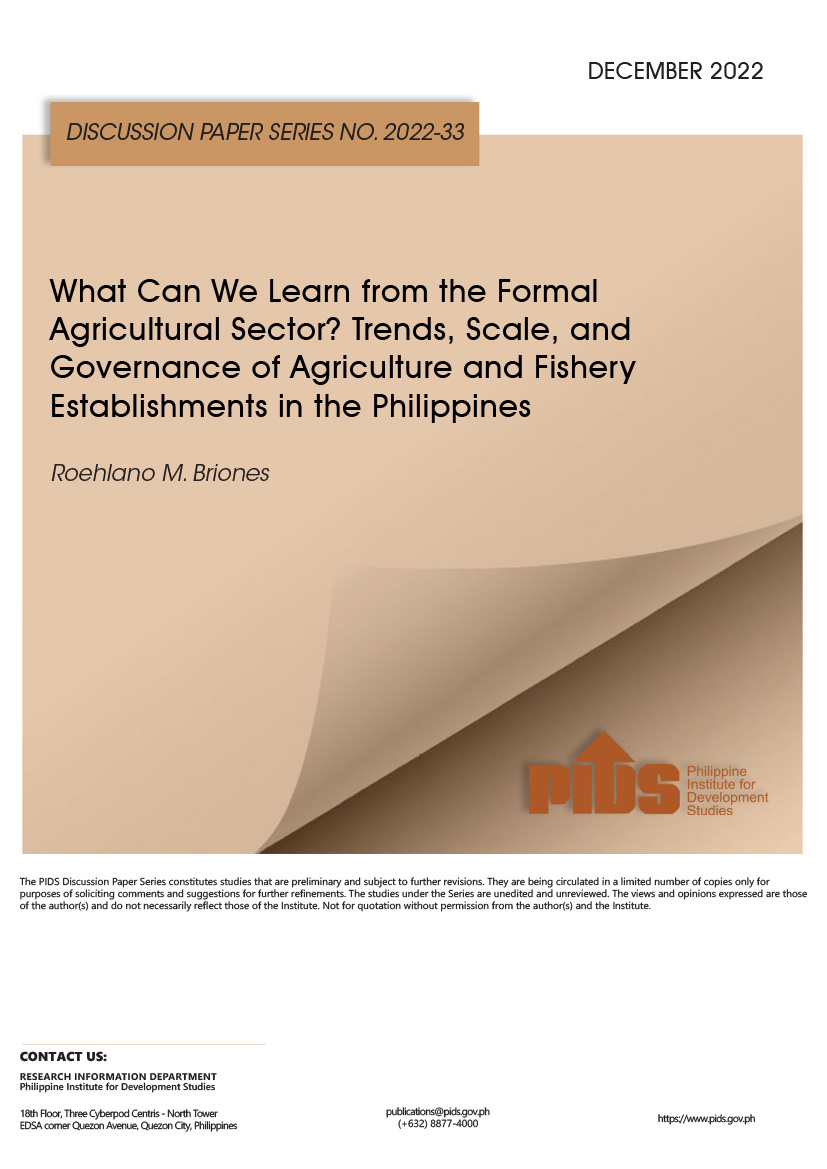The government’s national greening program (NGP) can help reduce poverty and preserve the environment if properly implemented, a private think tank said in its position paper.
Philippine Institute for Development Studies (PIDS) senior research fellow Danilo Israel said there is high probability the expected outcomes of the NGP will be attained, if it is implemented efficiently and effectively and as planned.
The NGP was a priority program of the Aquino administration aimed at poverty reduction, food security, environmental stability and biodiversity conservation and enhancement of climate change mitigation and adaptation.
It had a total budget of P31 billion for five years and aimed at planting 1.5 billion seedlings in 1.5 million hectares of land nationwide from 2011 to 2016.
As of June 2016, over 1.3 billion seedlings of various tree species have been planted in more than 1.6 hectares of open, denuded and degraded forest lands.
The PIDS study noted that the program exceeded its target area at 113 percent but fell short in its target seedling planted at 90 percent.
These figures, according to the study, already equaled or even surpassed what the Philippine government had accomplished in reforestation in the past 50 years.
Considering the government’s decision to extend the program to 2028, Israel said it is worthwhile to evaluate the NGP’s performance and look at the issues and problems encountered during its implementation.
Taking effective steps to improve its implementation will go a long way to ensure its success, he said in the paper he sent to select organizations, including the Daily Tribune.
The impact evaluation of the NGP conducted by PIDS estimated that the implementation of the program will result in a 0.3-percent increase in the total output of the economy in 2020, one percent in 2030 and 2.5 percent in 2050.
The forestry sector is expected to post the highest output growth effect, which is estimated to reach to as high as 5.5 percent in 2050.
According to Israel, the NGP also has the potential to increase household income and decrease poverty.
Almost three-fourths of households in NGP sites claimed there had been significant increases in their incomes. This was likewise confirmed by simulations done by PIDS, comparing business-as-usual scenario versus having the NGP.
In terms of employment generation, the NGP has provided 3.3 million jobs, around half a million of which are in upland and rural communities.
It also contributed in recovering forest areas. Using 2010 to 2015 figures, the Food and Agriculture Organization ranked the Philippines fifth among countries with most annual forest gain, with 240,000 hectares or 3.5-percent annual increase.
However, the study noted that while the NGP has been successful in planting seedlings, issues like low survival rate of trees planted and poor program monitoring have persisted.
There have also been allegations of corruption among the Department of Environment and Natural Resources (DENR) and people’s organization (PO) leaders, which created conflict within the community organizations in NGP sites.
Thus, Israel recommended a review of the design of the NGP, in terms of individual species and mix of tree species planted, tree spacing, and other important technical parameters.
He contended that the design and tree species planted by the NGP are not always appropriate to the sites.
Philippine Institute for Development Studies (PIDS) senior research fellow Danilo Israel said there is high probability the expected outcomes of the NGP will be attained, if it is implemented efficiently and effectively and as planned.
The NGP was a priority program of the Aquino administration aimed at poverty reduction, food security, environmental stability and biodiversity conservation and enhancement of climate change mitigation and adaptation.
It had a total budget of P31 billion for five years and aimed at planting 1.5 billion seedlings in 1.5 million hectares of land nationwide from 2011 to 2016.
As of June 2016, over 1.3 billion seedlings of various tree species have been planted in more than 1.6 hectares of open, denuded and degraded forest lands.
The PIDS study noted that the program exceeded its target area at 113 percent but fell short in its target seedling planted at 90 percent.
These figures, according to the study, already equaled or even surpassed what the Philippine government had accomplished in reforestation in the past 50 years.
Considering the government’s decision to extend the program to 2028, Israel said it is worthwhile to evaluate the NGP’s performance and look at the issues and problems encountered during its implementation.
Taking effective steps to improve its implementation will go a long way to ensure its success, he said in the paper he sent to select organizations, including the Daily Tribune.
The impact evaluation of the NGP conducted by PIDS estimated that the implementation of the program will result in a 0.3-percent increase in the total output of the economy in 2020, one percent in 2030 and 2.5 percent in 2050.
The forestry sector is expected to post the highest output growth effect, which is estimated to reach to as high as 5.5 percent in 2050.
According to Israel, the NGP also has the potential to increase household income and decrease poverty.
Almost three-fourths of households in NGP sites claimed there had been significant increases in their incomes. This was likewise confirmed by simulations done by PIDS, comparing business-as-usual scenario versus having the NGP.
In terms of employment generation, the NGP has provided 3.3 million jobs, around half a million of which are in upland and rural communities.
It also contributed in recovering forest areas. Using 2010 to 2015 figures, the Food and Agriculture Organization ranked the Philippines fifth among countries with most annual forest gain, with 240,000 hectares or 3.5-percent annual increase.
However, the study noted that while the NGP has been successful in planting seedlings, issues like low survival rate of trees planted and poor program monitoring have persisted.
There have also been allegations of corruption among the Department of Environment and Natural Resources (DENR) and people’s organization (PO) leaders, which created conflict within the community organizations in NGP sites.
Thus, Israel recommended a review of the design of the NGP, in terms of individual species and mix of tree species planted, tree spacing, and other important technical parameters.
He contended that the design and tree species planted by the NGP are not always appropriate to the sites.










